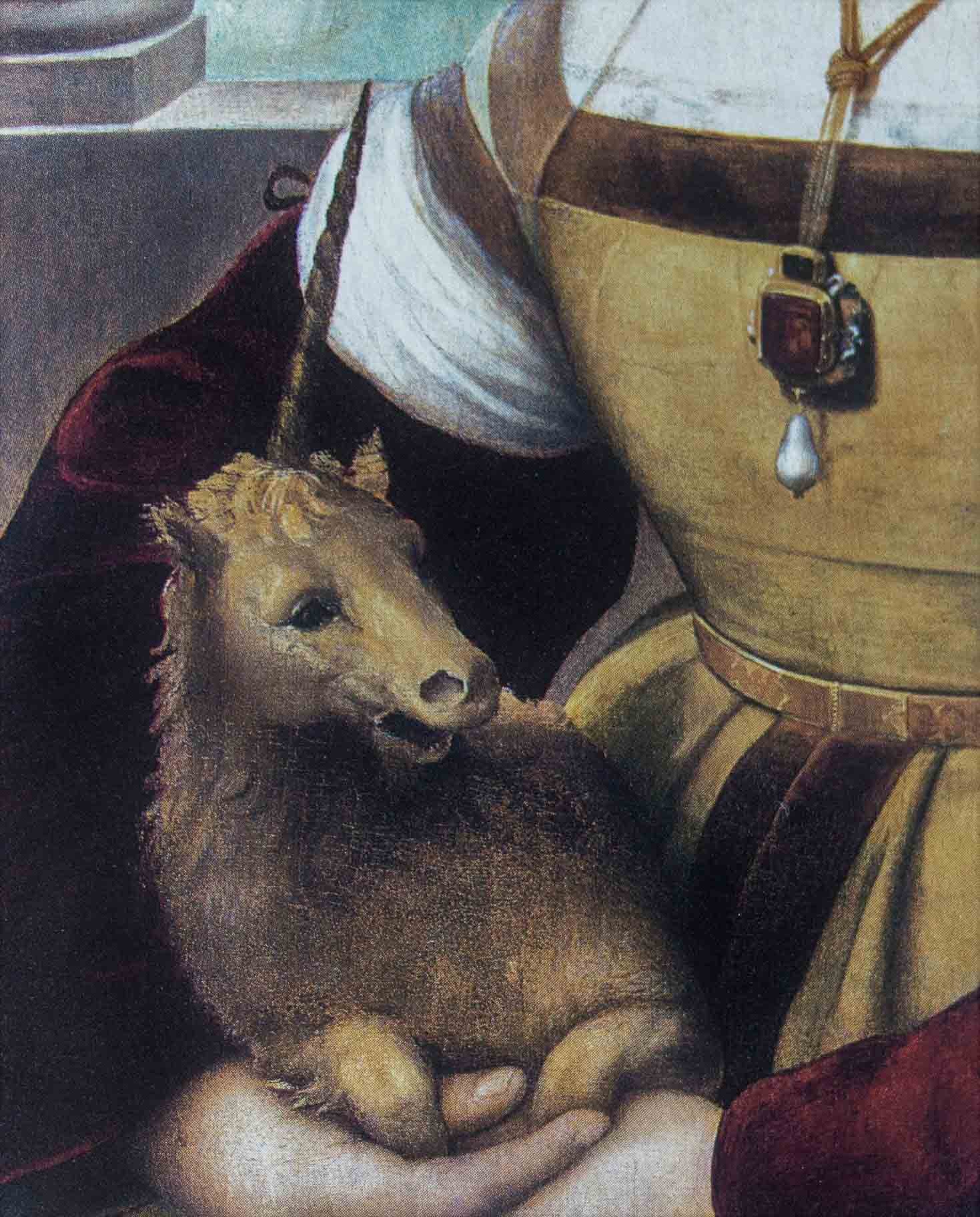
OBRAZY & RZEźBY Must-see paintings and sculptures
Raphael’s Woman with a Unicorn - an image of a virgin marked by virtue

The paiting was most likely painted in Florence, where the young painter went after leaving Umbria. It can be assumed that in painting the blond-haired beauty, he patterned himself after da Vinci’s Mona Lisa, which is testified to, by the same body shape, eyes gazing straight at the viewer and a characteristic folding of the hands. It must be added, that these types of portraits of young girls, often came from under the paintbrush of Raphael – a master of intimate mood and subtle color scheme.
However, it was not discovered, whom the painting represents. It was probably a lady from a wealthy home, which can be testified to by a pendant with a ruby and a pearl in the shape of a pear, perhaps a maiden looking for a husband – since these types of portraits were generally painted for that very reason. It is often connected with the beautiful Giulia Farnese, the long-time concubine of Pope Alexander VI and the sister of another pope, Paul III. However, such a representation would be in direct opposition with the virtues attributed to the unicorn itself, who was identified with purity and innocence. In addition, according to the descriptions of her contemporaries, Giulia, also known as “la Bella”, considered to be the most beautiful woman of those times, had a dark complexion and dark eyes.
The most interesting motif of the painting is undoubtedly the unicorn. Since ancient times it had been connected with magical forces and healing properties. In order to capture it, one needed an exquisitely dressed virgin, who in a deserted location would attract this nimble and quick, but most of all timid animal. In her company it became gentle and complacent. When, the unicorn recognized a girl full of virtues, of which the most important was virginity, it approached her, put its head in her lap and fell asleep.
The painter suggests therefore, that the woman facing us is flawless. Sitting in the column loggia, with a foggy landscape in the background, she looks at us with her visage bereft of a smile. Perhaps, early married, or perhaps just before her wedding, she desires to cover up her youthfulness with seriousness and responsibility. And it is they, as frames, or more appropriately the columns pressing against her from both sides, that seem to set the tone and sense for the girl’s life. The harmonious landscape behind her, in which the hill tops are covered by a misty gleam, tell us, that her feelings are somewhere on the border of uncertainty and curiosity, although it seems that there is more sadness than joy in her as she bids farewell to her childhood.
Raphael (Raffaello Santi), Portrait of a Woman with a Unicorn, 1505/1506, 67 x 56 cm, Galleria Borghese
Może zainteresuje Cię również
Raphael’s The Deposition – a painting of suffering, the fragility of life and an unforgettable loss
Zgodnie z art. 13 ust. 1 i ust. 2 rozporządzenia Parlamentu Europejskiego i Rady (UE) 2016/679 z 27 kwietnia 2016 r. w sprawie ochrony osób fizycznych w związku z przetwarzaniem danych osobowych i w sprawie swobodnego przepływu takich danych oraz uchylenia dyrektywy 95/46/WE (RODO), informujemy, że Administratorem Pani/Pana danych osobowych jest firma: Econ-sk GmbH, Billbrookdeich 103, 22113 Hamburg, Niemcy
Przetwarzanie Pani/Pana danych osobowych będzie się odbywać na podstawie art. 6 RODO i w celu marketingowym Administrator powołuje się na prawnie uzasadniony interes, którym jest zbieranie danych statystycznych i analizowanie ruchu na stronie internetowej. Podanie danych osobowych na stronie internetowej http://roma-nonpertutti.com/ jest dobrowolne.